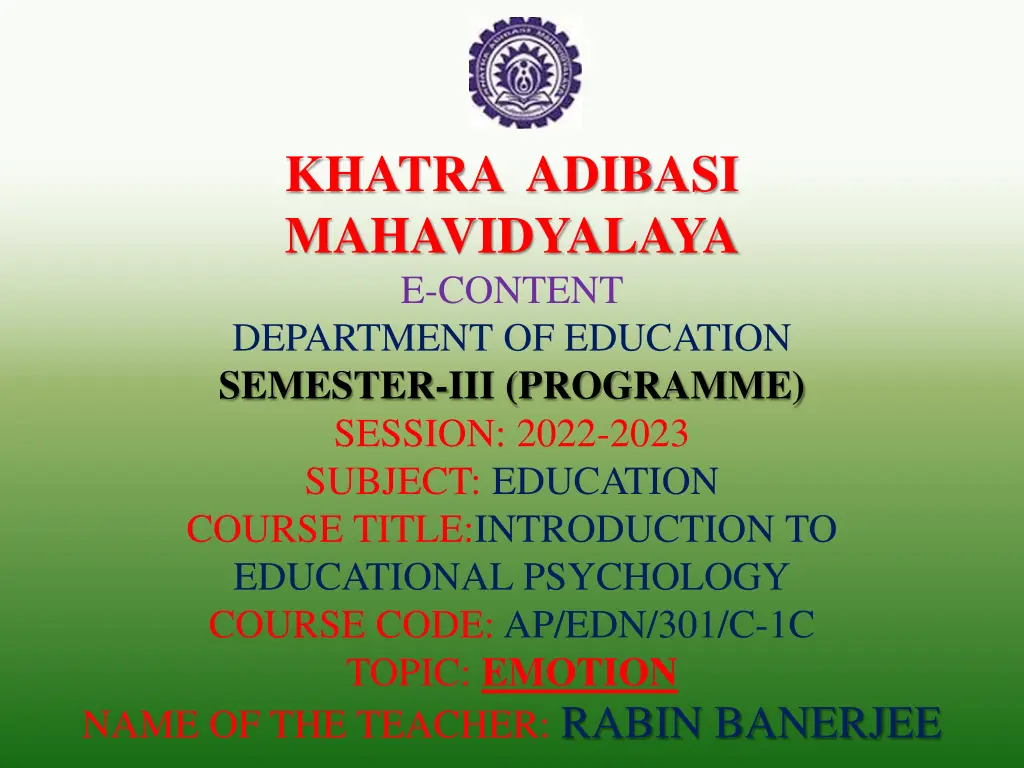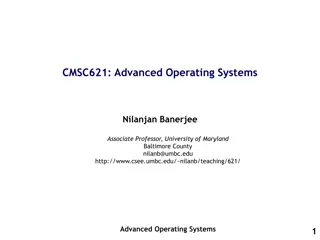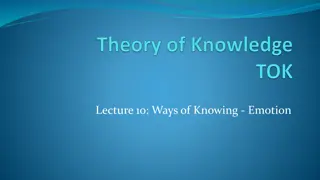
Understanding the Role of Emotions in Education
Explore the significance of emotions in education, including the characteristics of emotions, their impact on learning, and the role of positive emotions in enhancing the learning experience.
Download Presentation

Please find below an Image/Link to download the presentation.
The content on the website is provided AS IS for your information and personal use only. It may not be sold, licensed, or shared on other websites without obtaining consent from the author. If you encounter any issues during the download, it is possible that the publisher has removed the file from their server.
You are allowed to download the files provided on this website for personal or commercial use, subject to the condition that they are used lawfully. All files are the property of their respective owners.
The content on the website is provided AS IS for your information and personal use only. It may not be sold, licensed, or shared on other websites without obtaining consent from the author.
E N D
Presentation Transcript
KHATRA ADIBASI MAHAVIDYALAYA E-CONTENT DEPARTMENT OF EDUCATION SEMESTER-III (PROGRAMME) SESSION: 2022-2023 SUBJECT: EDUCATION COURSE TITLE:INTRODUCTION TO EDUCATIONAL PSYCHOLOGY COURSE CODE: AP/EDN/301/C-1C TOPIC: EMOTION NAME OF THE TEACHER: RABIN BANERJEE
EMOTION The word emotion derived from a Latin word Emovere which means stirred up or to excite in English. Emotions are conscious mental reactions (such as anger or fear) subjectively experienced as strong feelings usually directed toward a specific object and typically accompanied by physiological and behavioural changes in the body.
Characteristics of Emotion There are 4 (four) characteristics of emotion. These are: 1) Physiological arousal, 2) subjective feelings, 3) Cognitive process and 4) Behavioural changes
Role of emotion in education Emotions and learning are inseparable. Emotions can both enhance and interfere with learning depending on which ones are driving or colouring the experience. Emotions can also be contagious, with strong positive or negative emotional states infecting others in the learning environment. Whether in a face-to-face or online environment, the emotional states of learners and teachers can influence one another. Emotions are inherently linked to and influence cognitive skills such as attention, memory, executive function, decision-making, critical thinking, problem-solving and regulation.
Role of emotion in education Positive learning emotions include interest, curiosity, wonder, passion, creativity, engagement and joy. These activate the reward system of the brain, make the experience desirable, and aid in focus and attention. Positive emotional states can enable students to broaden their perspective, see alternatives, persist through challenges and respond effectively to criticism and failure.






















